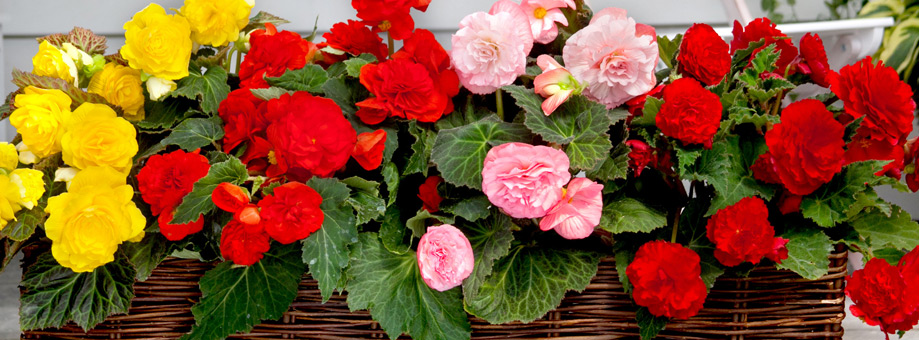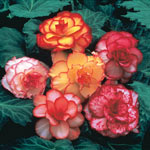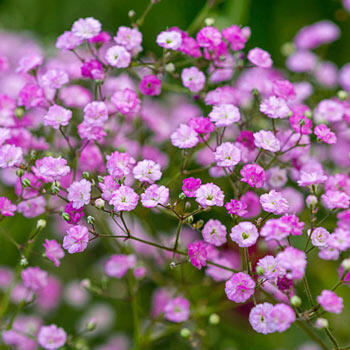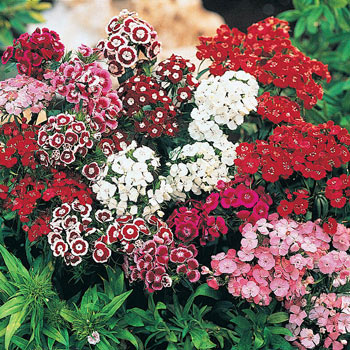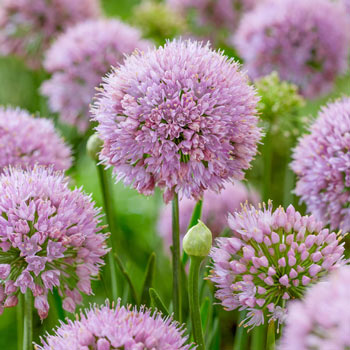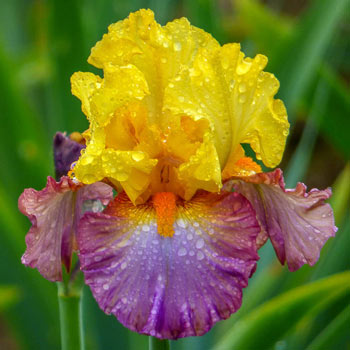- About Bulbs
- Landscaping Tips
- Planting & Care of Bulbs
- Tips for buying Bulbs & Perennials
- Planting & Growing Instructions
- Allium Planting and Growing Tips
- Begonias Planting and Growing Tips
- Calla Lily Planting and Growing Tips
- Crocus Planting and Growing Tips
- Daffodil Planting and Growing Tips
- Dahlia Planting and Growing Tips
- Daylily Planting and Growing Tips
- Gladiolus Planting and Growing Tips
- Hyacinth Planting and Growing Tips
- Iris Planting and Growing Tips
- Lily Planting and Growing Tips
- Peony Planting and Growing Tips
- Rose Planting and Growing Tips
- Tulip Planting and Growing Tips
What Makes Begonias a Good Choice For Your Home Garden?
Begonias are a popular choice for home gardeners and can add a splash of color to eventing from flower beds to pots. Learn more about how to plant, grow and care for your begonias.Begonias add bright color and a tropical look to patios, entrances and porches with their showy, often ruffled, flowers and lush foliage. Ideal for containers, hanging baskets and window boxes, these easy-care plants grow best in the shade or partial shade, though some varieties may tolerate some sun. Begonias can also be planted in flower beds and borders. Their blooms are a welcome sign of summer--and they continue flowering until frost in the fall.

Because of their long flower season and full foliage, begonias shine as container plants. Begonia plants fill and even spill over containers. While your garden visitors will admire their flowers and leaves, deer tend to pass them by.
Popular Begonia Types
Where Can You Plant and Grow Begonias?
Begonias are tropical plants that'll grow in zones 3-10 (lift bulbs in the fall in zones 3-7). They prefer areas that receive a lot of light but also enjoy some protection from the sun. An ideal spot in the landscape is somewhere the plants will get plenty of sunshine in the morning and a bit of shade in the afternoon.Wax begonias, sometimes called bedding begonias, are common in flower beds and known for their red, pink or white flowers. They tolerate extended periods of direct sunlight better than other types. The tuberous begonia, which likes more shade and less heat, is prized for its larger flowers, bright colors and foliage. Some are even fragrant.
How and When to Plant Begonias
For best results, plant begonia tubers in the spring. While most don't like direct sun, most begonias will tolerate a bit of morning sun or filtered sunlight. Because begonias are tropical plants, do not set them outdoors until the weather warms and nighttime temperatures are above 60 degrees. If you are planting begonia tubers in the garden, consider planting them indoors and transplanting them to the garden once the weather warms. This way you can make the most of their flowers and foliage. Plant begonia tubers about 1 inch deep and about 10 to 12 inches apart.Growing Tips For Begonias
Begonia foliage emerges weeks after planting--and then come the flowers. Your begonia plant requires regular watering. Keep the soil moist, but don't overwater your begonia plant. You'll always want to fertilize your begonia plant during the growing season.While begonias look spectacular in hanging baskets, make sure you place your begonia plant where it will be protected from the wind and harsh afternoon sun.
When the weather cools in the fall, begonia plants can be brought indoors as houseplants. You can also lift and store the tubers in a frost-free location in the fall and replant the tubers in the spring.
How Much Water Do Begonias Need?
When it comes to watering begonias, it is important to always keep the soil moist. It is best to water your begonias every few days or when the soil begins to dry out. Keep in mind that begonias are susceptible to rotting if the soil conditions are too wet or if the plant is overwatered. To prevent water from pooling in the tuber, it is recommended to water around the tuber as opposed to directly atop of it.What Is The Best Soil for Begonias?
Begonias prefer well-drained soil and will tolerate acidic, sandy, and clay soil, as long as it's well-drained. Because Begonias are highly susceptible to stem and root rotting, it's important that your begonias have a proper drainage system. You can ensure that your begonias aren't exposed to overly wet soil by choosing a lighter potting soil that has extra perlite or by creating your own soil mix of peat moss, perlite, and potting soil. Be sure to use equal parts of each soil type.Tips for Selecting Begonias
Today's gardeners have many begonia choices, including hanging basket and hardy begonias. Begonia flowers come in a range of bright colors, including red, yellow, pink, orange and white. Some have ruffled flowers and picotee edging. Flowers can be single or double and up to 8 inches across. Begonia leaves are often green, but some varieties have darker leaves. The foliage is often large and sometimes serrated.Many begonia plants grow up to 12 inches tall, but some begonias grow larger. When selecting begonias, make sure to note their height and spread. This helps you determine what containers to plant them in or how many you'll need for window boxes or flower beds.
Some gardeners will plant a single begonia tuber in a decorative container, while others fill window boxes with several begonias.
If you are planning to plant begonias in hanging baskets or window boxes, or desire a begonia that spills over the container's edge, choose one of our hanging basket begonia varieties.

Want super large flower blooms? Try growing one of our dinnerplate begonias. The flowers are up to 8 inches across.

Like dark leaves and brilliant red flowers? Switzerland Begonia makes a dramatic impact in the garden.

Whichever begonia variety you choose, it's sure to add cheer and color to your summer.
Common Begonia Diseases and Pests
Poor drainage or very wet conditions are very harmful to begonias since these conditions cause rotting of begonia stems. Botrytis rot, or bud rot, is a fungal disease that affects the necessary water and nutrient delivery to begonias, often resulting in death. Powdery mildew is another type of fungal disease that cripples the growth of begonias, turning them yellow, and causing them to drop prematurely. Finally, mealybugs and white flies tend to attack indoor begonias but these annoying pests can be stopped by spraying an insecticidal soap and by using a cotton ball with rubbing alcohol to dab the mealybugs.How to Care for Begonias in Pots
Begonias prefer growing in light, rich soil with a good concentration of humus, similar to the makeup of potting soil. So it's no surprise the plants tend to thrive in containers. Begonias planted in a pot should be spaced 4-6″ apart and with the tubers buried hollow-side up. To prevent the soil from drying out, begonias in containers need to be watered more frequently than those planted in the ground. It's important to keep the soil moist but not soggy, otherwise root rot can occur and kill the plants.You May Like...







